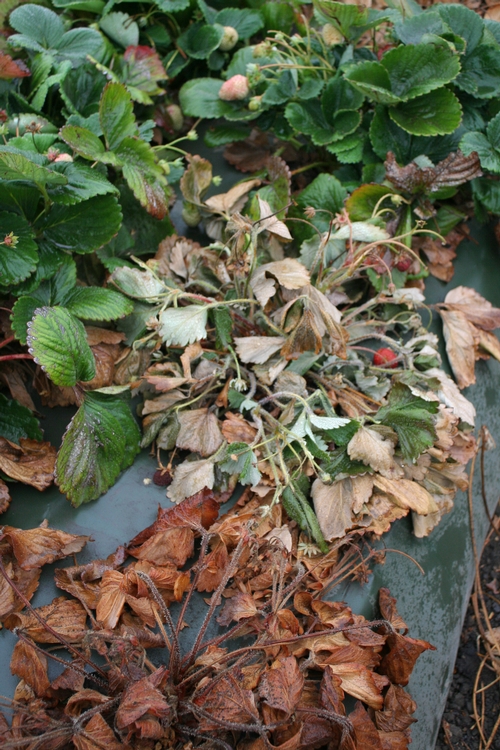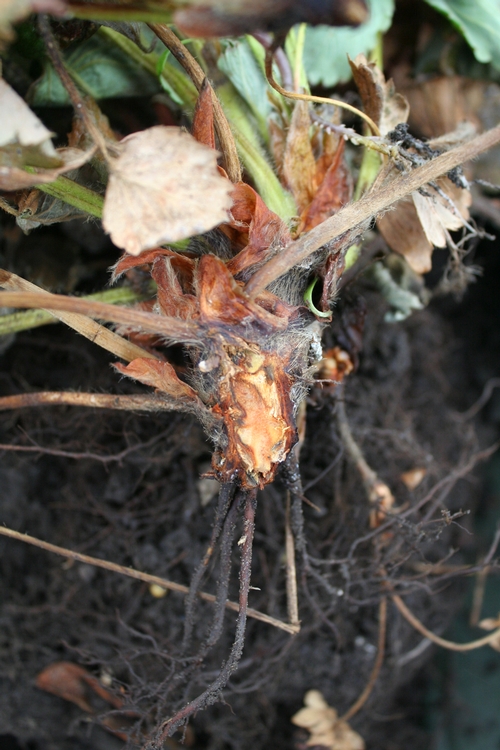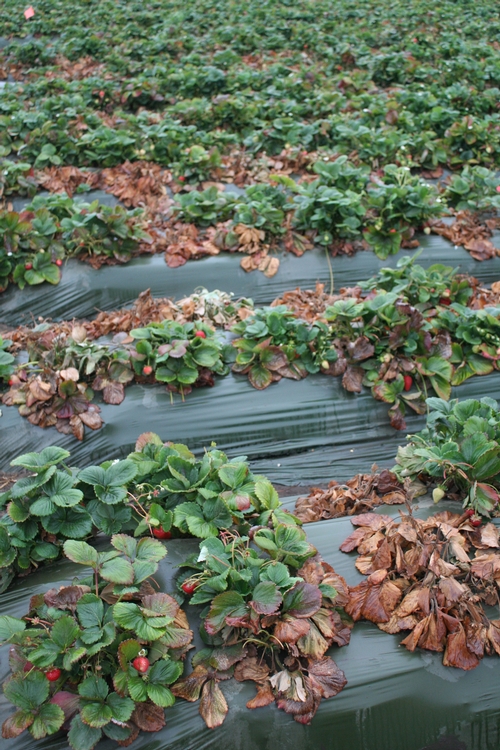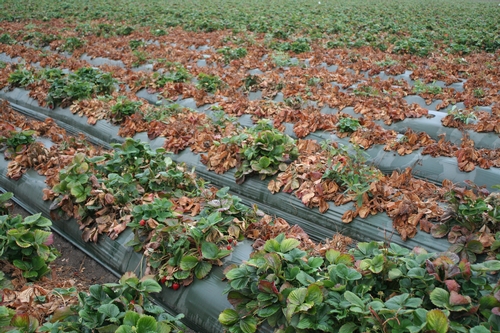Third Macrophomina Find in Watsonville- Salinas Production District
A big field of strawberries in Santa Cruz County has been confirmed as being infected with Macrophomina phaseolina. This is the third confirmation of this disease in the Watsonville- Salinas production district. Long time readers of this space will know that the first confirmed find was two years ago which interestingly is in close proximity to this latest situation.
Symptoms of this disease, known as charcoal rot or crown rot, are marked by plant stunting, initial wilting of older foliage, and the drying and death of outer leaves (Photo 1 below). Similar to a plant infected with Verticillium, the central leaves will remain green and alive for a period of time. However, in contrast to most Verticillium infections which show little to no discoloration of the crown when cut open, a plant infected with Macrophomina will show a distinctive dark brown to orange brown discoloration of the crown (Photo 2 below). Eventually, plants infected with Macrophomina will collapse and die.
What is notable about this particular field is the astonishing distribution and severity of the infection (Photo 3 and 4 below) even though the field was flat fumed with methyl bromide- chloropicrin every other year for more than a decade. It is presently a mystery to researchers how this infection reached this magnitude so quickly.
A grower with a Macrophomina infested field should take action to limit the spread of the fungus. Any sort of tillage of an infected field should be followed by a thorough washing with water to remove soil clods and trash which are all potential carriers of the pathogen. Finally, to attempt to clean up Macrophomina from strawberry fields, pre-plant flat fumigation with methyl bromide/ chloropicrin provides the best control.
What about rotating to a non-host crop? This is actually a difficult question to answer. Macrophomina has a broad host range and is reported as a pathogen of many vegetable, fruit, and field crops. Rubus, the genus of caneberries, has not been reported as a host, but that does not necessarily mean such plants would never be infected. Still, it is too early to know for certain whether Macrophomina from strawberry can infect other hosts. Some researchers have successfully infected strawberry with Macrophomina from other hosts, but not the other way around. Our UCCE team is conducting research to answer these and other questions about Macrophomina in California fields.

Close up of Macrophomina induced dieback.

Discolored crown typical of Macrophomina infection.

Overview of dieback in field.

Large dead area caused by Macrophomina infection.
Comments:
However, should you want to replant the field with new plants next year, soil fumigation is the only thing that will give you a chance of getting rid of this disease.
I don't know what your situation is John, but I would strongly recommend you NOT plant strawberries again in this field for at least a few years, because this pathogen could be around for a while.


Posted by John on April 30, 2015 at 3:39 AM